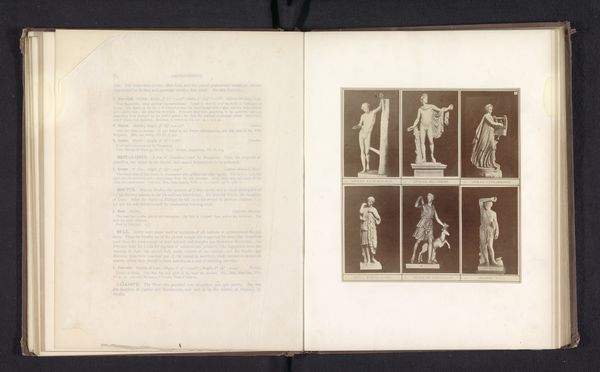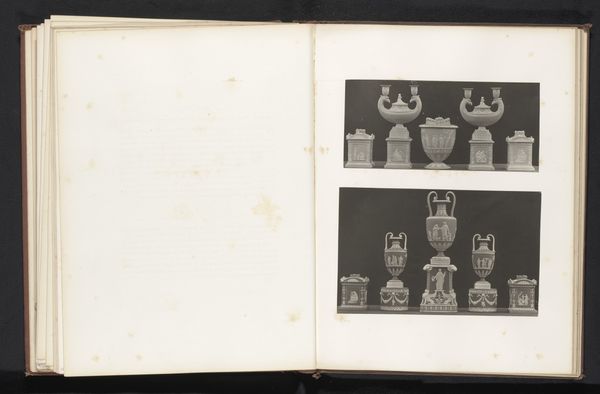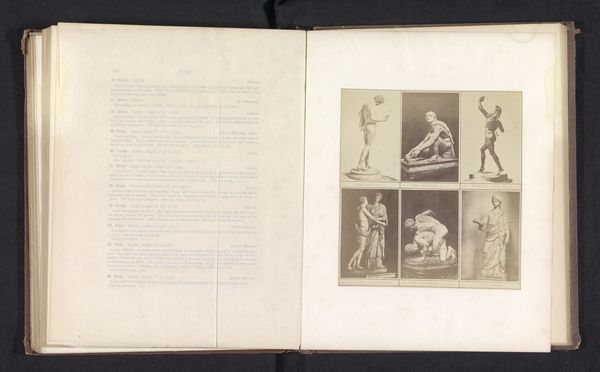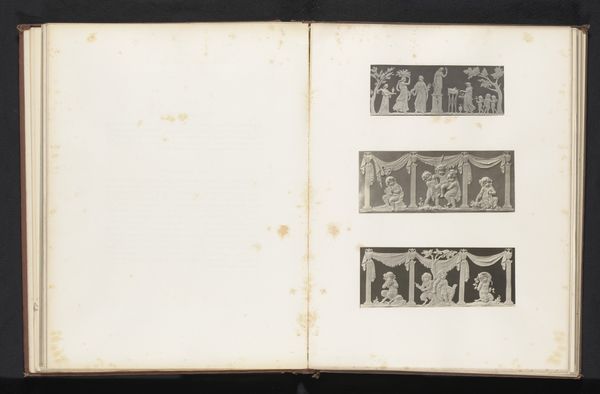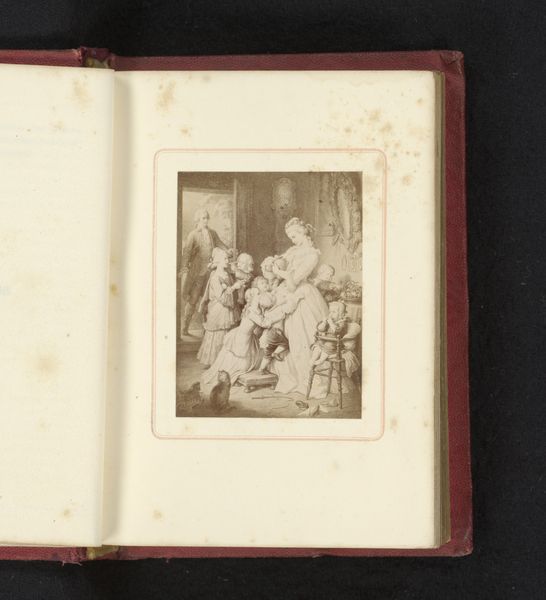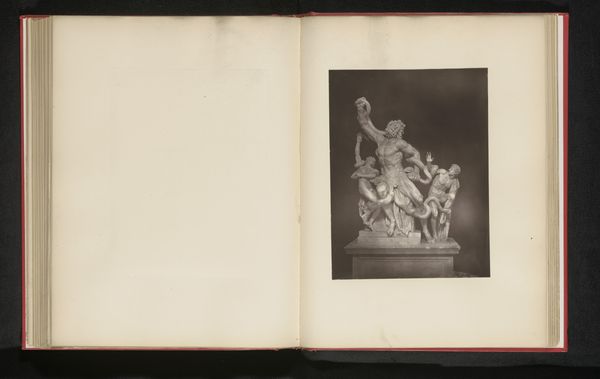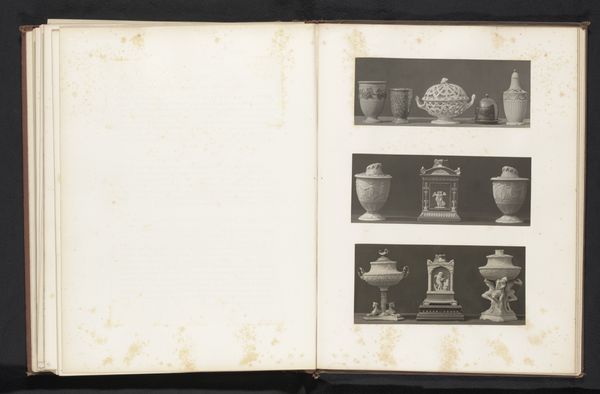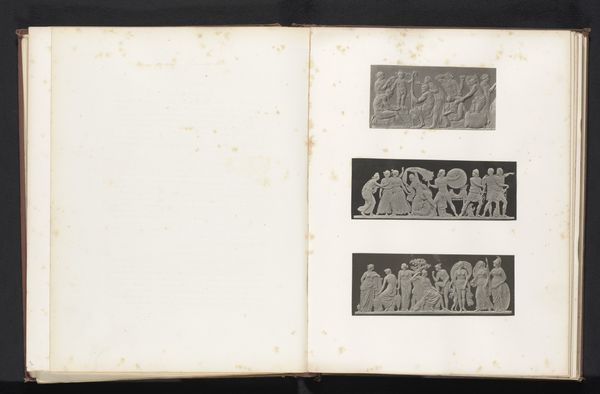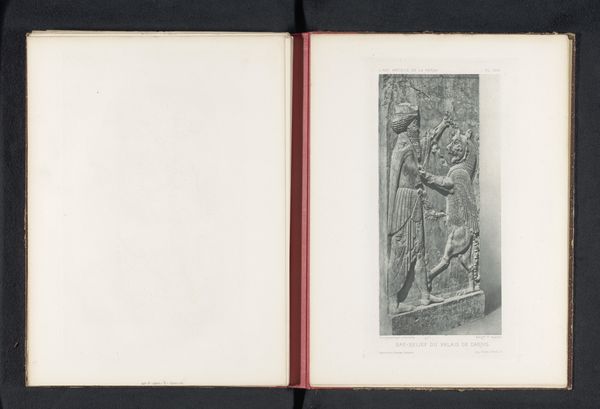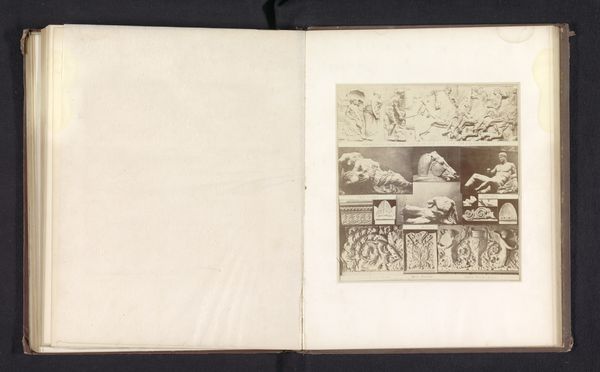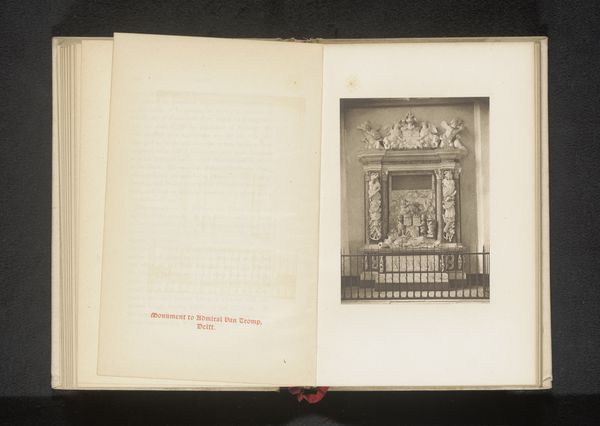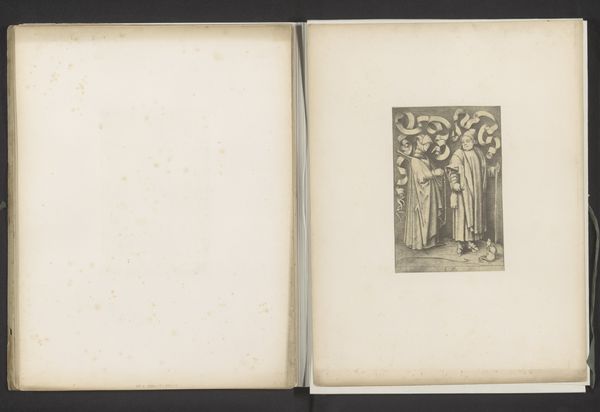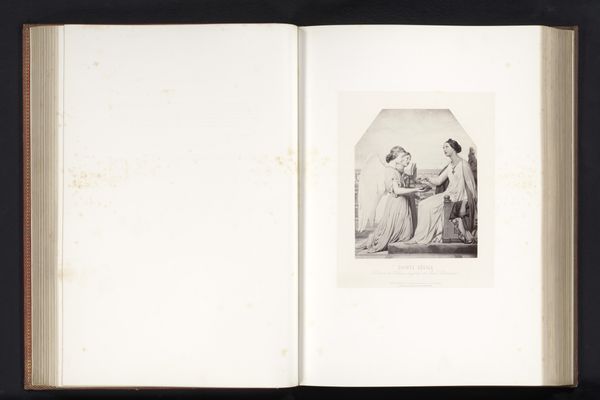
Vijf afgietsels van antieke sculpturen waaronder de slapende Ariadne uit de Vaticaanse Musea before 1874
0:00
0:00
print, photography, collotype, sculpture, gelatin-silver-print
#
portrait
#
aged paper
#
homemade paper
#
ink paper printed
# print
#
greek-and-roman-art
#
sketch book
#
hand drawn type
#
paper texture
#
photography
#
personal sketchbook
#
collotype
#
hand-drawn typeface
#
sculpture
#
gelatin-silver-print
#
sketchbook drawing
#
sketchbook art
Dimensions: height 185 mm, width 171 mm
Copyright: Rijks Museum: Open Domain
Curator: Look at this spread, an open sketchbook really, revealing a series of gelatin-silver prints. This is a work entitled, "Vijf afgietsels van antieke sculpturen waaronder de slapende Ariadne uit de Vaticaanse Musea," created before 1874 by H.G. Smith. Editor: Instantly, I'm struck by the quiet reverence embedded within the sepia tones, the muted grandeur of these ancient forms captured in a delicate dance between photography and sculpture. They are ghost-like relics from another time and culture, appropriated for study. Curator: Right? Smith has documented plaster casts, which were popular teaching aids at the time. It's interesting to me because photography offered a democratized approach to accessing these classical forms. You didn’t have to journey to Rome; Smith brings Rome to you. What are your feelings about the reclining Ariadne at the top? Editor: Well, considering Ariadne was abandoned on an island by Theseus, that sleep seems fraught, not peaceful. She is stuck forever there on Naxos in a state of vulnerable suspension and stillness, which connects with many ancient images of women abandoned and exiled for transgressions both real and invented. Curator: That interpretation makes it even more heartbreaking. This single image pulls me in different directions. There is an artistry involved in replicating and framing these forms in the same way there would have been when capturing each moment in a performance, and for it all to collapse to dust just moves me profoundly. Editor: Absolutely, each print encapsulates the layered nature of representation and reproduction inherent within artistic historical practices. Looking closer, there is the collotype aspect – it brings me to those discussions around reproducibility and authorship – who "owns" this history, and who gets to tell its story? It feels poignant as the gelatin silver is deteriorating on the paper too. Curator: It really feels that this entire assemblage whispers about the fleeting nature of artistic fame, artistic inspiration, but also the fragility of human legacy when put to a large enough timeline. It is easy to pass this sketchbook by in the exhibition and I think there are so many layers beneath the surface that could resonate across different identities, generations and locations. Editor: For me it underscores how art can collapse the distances across time and cultural context to forge unexpected connections in the present moment.
Comments
No comments
Be the first to comment and join the conversation on the ultimate creative platform.
